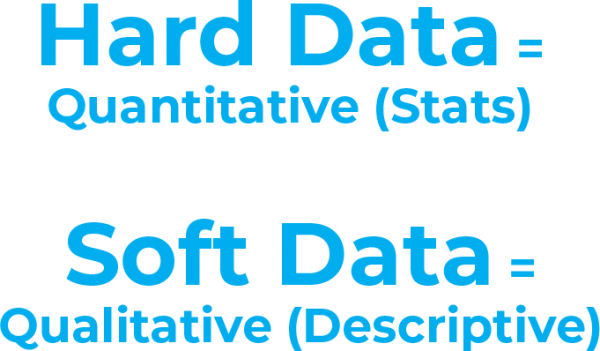What’s the True Value of Multifamily Inbound Marketing?
Marketers should be wary of a few things when committing to a new multifamily marketing strategy. With overcrowded markets and constant construction in major metropolitan areas, it’s difficult to know how to distinguish your property.
When adopting nontraditional strategies, it’s hard for marketing veterans to understand how they add value.
Most marketers fail to realize that digital marketing offers more measurable value than traditional methods. Traditional methods bring prospects and residents at largely unknown rates, whereas multifamily inbound marketing offers measurable results.

In fact, multifamily inbound marketing offers three times more leads per dollar than traditional methods, and inbound leads cost 61% less on average.
This form of data intelligence is one of the many values that a digital marketing method like inbound offers marketers.
Maximizing Multifamily Marketing Analytics to Produce Measurable Insights
Perhaps the biggest benefit of digital marketing is the ability to track everything. Traditional marketing material printed and displayed cannot always track how many people saw your billboard or looked at your mailer. However, digital marketing tactics can provide this information with the ability to set goals that produce measurable insights.
Tools like Google Analytics and HubSpot or SharpSpring offer data on multifamily website visits or what pages they looked at. Email marketing platforms can tell you who opened your email and which links were clicked on most. And social media for apartments can give you the reach of organic posts and paid advertisements.
The world of analytics in the realm of multifamily inbound marketing is deep. It is just a matter of keeping up with that data.
Nurturing Your Apartment Leads to Land the Lease

Consider a marketer trying to lease up a workspace in a renovated building. Looking at digital efforts independently, they could know the percentage of traffic on the leasing page from social media versus referral sites versus organic searches. However, a multifamily inbound marketing approach further emphasizes integrating various methods to maximize a prospect’s educational experience.
For example, a well-planned social media post might lead to a blog with a call-to-action that leads to an offer describing the benefits of working downtown. By emailing the prospect after they download the offer, they’re given information on what to look for in an office space. Continued follow-ups via email might ultimately lead to a lease.

Using Data to Optimize Your Multifamily Inbound Marketing Results
Digital marketing can also pull data and analytics to understand the interactions at each point. A multifamily inbound marketer can figure out how many people who saw that social media post chose to click on the link. On average, they can tell how long people spent reading that blog and how many people on that blog clicked on the call-to-action feature. Insights like these allow marketers to make changes where necessary.
This is an underappreciated value of multifamily inbound marketing. Regularly tracking and offering such insights in the conversion funnel allows marketers to optimize their efforts better. Businesses can save time and money by ensuring their strategy is always on track, and that goals are within reach.
Per HubSpot, the less a business knows its key performance indicators (KPIs), the less likely it will be to meet revenue goals. Therefore, with this “track, test, and re-test” approach, properties using multifamily inbound marketing are certain to know and meet their vital goals.
Supporting the Numbers
While marketers in their daily life may care more about achieving goals efficiently, most executives care about the numbers. This is another area where multifamily inbound marketing offers strong value. Calculating ROI, cost per lead, and customer acquisition cost is simple when using inbound methods, as the data can be tracked easily.
Consider cost per lead: It’s as simple as knowing your ad spend and dividing it by total leads.
Cost per lead (CPL) = Total Marketing Spend / Total Leads
If you want to understand your cost down the pipeline, you dive deeper, calculating the cost per qualified apartment lead. To do so, you would need to divide your spending by the number of apartment leads classified at each point. Remember how we mentioned earlier that multifamily inbound leads cost 61% less on average? This is how marketers can prove that number.
For marketers looking for more comprehensive numbers, cost per customer acquisition can show each customer’s value. For this, you divide spending by amount of customers. The value of customer acquisition cost is its use in calculating overall ROI. This, along with lifetime value (Annual Spend on Product or Service by the Customer * Expected life of customer), can help you develop the ROI number your CFO desires.
ROI=( Lifetime Value – Cost Per Customer Acquisition)/ Lifetime Value
This number is key to gaining support for your efforts.
An All-Encompassing Multifamily Marketing Solution
It can be tempting for marketers and property managers to rely on the world of traditional advertising. For so long, our lives have been surrounded by intriguing commercials, radio ads, and billboards, making the digital world seem unfamiliar.
However, multifamily digital marketing efforts like inbound offer a true measurable ROI that is often absent from more traditional methods. With this, apartment marketers can ensure that their efforts are consistent and effective.
What Is Experiential Multifamily Marketing (And How It Can Benefit Your Property)
The best way to understand the power of an experiential multifamily marketing campaign and how it can help you increase your apartment leads is to look at some popular brands that have executed it effectively.

Imagine you are at New York’s JFK Airport. You’ve got the ticket, passport, and carry-on bags ready to board. But right on your way to the gate, you see a huge board like this…

Heineken has given you a challenge. You get free round-trip tickets to a new and adventurous destination if you push the button. Sounds great, right? But here’s the catch: You don’t know the destination and must leave now.
The event video “Departure Roulette” has gained over three million views. The story was also featured by the New York Times, Time Magazine, AdAge, and countless others.
So, why does Heineken do this? Why doesn’t it stick to the entertaining beer commercials and social media?
What Is Experiential Multifamily Marketing?
The answer is simple: Friendly multifamily brand engagement on social media no longer sets you apart. Today’s audience craves suspense, wild creativity, and digital experiences that translate into real ones. They want a full-on experience with a multifamily brand.
This is where an experiential multifamily marketing campaign comes in.
According to Jeff Benjamin, the Chief Creative Officer at JWT North America, experiential multifamily marketing “is what brands do in the world that gets people ‘participating.’”
The participation started with passengers at the JFK airport when the event occurred. But thanks to the mighty power of social media, everyone on the internet is now a potential participant.
The beauty of experiential multifamily marketing, as David Moth explains, is that it “creates a closer bond between the consumer and the brand by immersing them in a fun and memorable experience.”
The best way to understand the power of an experiential marketing campaign is to examine some companies that have executed it effectively.
The Dos Equis Experiential Marketing Campaign
Several years ago, Dos Equis launched a national campaign called “Masquerade” to gear their fans up for Halloween and help them “stay thirsty” for the brand. The prize was a trip to New Orleans for the Dos Equis Masquerade, featuring musical guest Q-Tip.
It would not be a Dos Equis campaign without their brand persona: The Most Interesting Man in the World.

Unlike past campaigns, however, The Most Interesting Man doesn’t just tell another adventurous tale. He invites the audience to become part of his story.
The Experience
Dos Equis launched an interactive video to kick off the experiential marketing campaign. A mission is on the screen before a viewer starts playing the video: “Find The Most Interesting Man’s Little Black Book and Be Rewarded With a Very Interesting Phone Call.”

When the viewer hits play, the screen displays a navigational question. Each navigational choice leads to a different party room and story scenario. Throughout the video, there are several different navigational choices; the viewer’s decision will decide whether he or she can find The Most Interesting Man’s lost little black book.
Additionally, Dos Equis planted 21 virtual reality headsets in a few bars in the brand’s key markets (including Texas). Patrons could enter The Most Interesting Man In The World’s exclusive Masquerade party and travel through the rooms to become a part of the story.

The interactive video of the experiential marketing campaign was viewed more than 27 million times. The #xxmasquerade hashtag garnered 1,861 posts on Instagram. Countless major media platforms have covered their story. From a metrics standpoint, the campaign was a huge success.
Why Dos Equis’ Campaign Worked
The key to an experiential multifamily marketing campaign is to have digital meet physical. Dos Equis perfectly enabled this integration through technology, storytelling, and a physical event (Dos Equis Masquerade in New Orleans).
The virtual reality headset and interactive video allow viewers to immerse themselves in the fictional world of The Most Interesting Man. By combining the prize with the physical event of a real Masquerade party in New Orleans, Dos Equis amplified people’s desire to see their fantasies become reality.
The technology perfectly supported the creative strategy, providing the audience a fun and relevant experience. From a consumer engagement standpoint, Dos Equis earned themselves a big “Bravo!”
Ubisoft’s ‘Amazing Street Hack‘
You probably have heard of UbiSoft if you own a Wii, Xbox, or PlayStation console. UbiSoft is a French video game developer that produced several popular adult-oriented video games today.
The Campaign
A few years ago, UbiSoft created an experiential marketing campaign called the “Amazing Street Hack” to help promote WatchDog, its new open-world action-adventure game. Because its video games have strong plots, UbiSoft usually promotes new games with a trailer/demo on TV or online. However, this time, UbiSoft added an incredible guerrilla marketing element.

The Experience
The stunt began in a set-up consumer electronics store with a big sign on the storefront that read, “Special Offers: Smartphone Repair in 15 minutes 24/7.” Is anything overly suspicious? Probably not.
Of course, the smartphone repair is only a cover. In addition to fixing their phones, the salesman installs a “special” mobile app — a magical tool to help you become a real street hacker.
The salesman walks outside and shows customers how it works. With this app, they can unlock cars, change traffic lights, and pump money from an ATM (all coordinated by UbiSoft). Want to see what exactly happened? Watch this “Amazing Street Hack” video here:
Why Ubisoft’s Campaign Worked
The “Amazing Street Hack” video garnered more than 23 million YouTube views and countless featured stories in media. The query “Amazing Street Hack” also returns 30 million search results on Google.
Obviously, this “pranks-vertising” worked very well for UbiSoft and WatchDog. Why?
First, it has all the elements that make this experiential multifamily marketing campaign an experience. The street stunt was impeccably planned and executed. It caught people off guard, and it gave them an experience that was “of another world,” suspenseful, and relevant.
The great content provided the online audience with great entertainment value. This quickly turned the experiential marketing campaign viral on social media. Most importantly, it motivated people to buy the game. With WatchDog from UbiSoft, you can have all these amazing hacks without taking on real responsibilities.
Coca-Cola’s “Open Happiness” Campaign
Marketing professors always quote: If you stripped away all of Coca-Cola’s physical assets, the company could still get back on its feet so long as it didn’t lose the right to the Coca-Cola brand.
Ranking No. 6 on Forbes’ The World’s Most Valuable Brands list with a brand value of $64.4 billion, Coca-Cola is indeed the epitome of branding success.
The Campaign
In 2009, Coke replaced its four-year global “Coke Side of Life” campaign with “Open Happiness.” The experiential marketing campaign debuted with the usual TV commercials, print ads, and outdoor advertising. However, the viral element to this campaign was Coke’s brilliant use of vending machine hacks. Coke “dispensed happiness” to millions of people having an otherwise ordinary day through these hacks.
The Experience
The first vending machine hack — “Happiness Strike” — was launched in 2010 on a college campus in New York. At the school cafeteria, an unsuspicious-looking vending machine sitting by the wall delivered students endless free coke, fresh flowers, pizza, balloons, a 40-inch-long sandwich, and of course, an indescribable amount of happiness to everyone on the scene.
The video went viral online, which inspired Coke to take this vending machine happiness hack to the world stage.
In South Korea, Coke installed a dance machine featuring a popular local band 2 PM’s classic dance steps. Using MicroSoft’s Kinect motion sensor technology, people could mimic 2 PM’s dance moves. The more accurate they were, the more free coke this dance machine dispensed.
In Belgium, Coke partnered up with the new James Bond movie SkyFall. Commuters were challenged in a local train station to jump across platforms in 70 seconds with obstacles. As a result, the winners received exclusive tickets to the movie premiere and a bottle of Coke Zero.
Additionally, Coke used a high-tech vending machine installed in malls in Lahore, Pakistan, and New Delhi, India. The machines aimed to help people separated by political reasons to resolve their differences, connect, and share a happy moment.

Why Coke’s Campaign Worked
Consistency, relevance, and wild creativity are the three most defining characteristics of Coke’s “Open Happiness” experiential marketing campaign.
Consistency: Since the campaign’s inception, hundreds of videos have been produced for “Open Happiness.” Both commercials and real-world events deliver a seamlessly integrated message: Coke is for your happy moment. Whether you are in the video or watching the video, you invariantly experience the joy from the scene.
Relevance: Coke’s change of brand message began as a response to a culture shift in our society. In a world of uncertainties, people are yearning for a place of comfort and optimism. With a unified “happiness” message and customized local campaign executions, Coke made itself relevant to customers emotionally and geographically.
Creativity: “Open Happiness” deserves applause because it took digital beyond the internet and made technology interesting in real life. When combined with creativity, even a vending machine can become a source of entertainment. After all, happiness often finds us when we least expect it!
The Bottom Line of Experiential Multifamily Marketing
The core event of your experiential multifamily marketing campaign is to engage your consumers. People must physically participate in the events and pass the message online to others.
And the power and presence on social media do not go unnoticed. So, back to the Departure Roulette: A few lucky Twitter users who tweeted their excitement about the campaign got an unexpected visit by the Heineken crew. The campaign enthusiasts were visited by the roulette board and allowed to push the button that held their travel destination.
When consumers are actively engaging in a multifamily brand or campaign and then get rewarded, you create advocates — and other consumers notice. Leverage these opportunities to create experiences consumers want to be involved in.
As multifamily marketing tactics evolve, how do you think marketers will begin to incorporate an experiential marketing campaign into their efforts?

Any new business plan starts by assessing the environment and the opportunities ahead. What’s in store for multifamily marketing for the remainder of this year? What goals can we set? How can we achieve them?
We surveyed the digital multifamily marketing environment and made predictions for the remainder of this year and beyond.
We’ve settled on the four multifamily marketing trends we project to have the most impact and potential this year:

1. Customer Storytelling
Oftentimes, it can be hard to develop a multifamily brand story, especially if our product or service is not outwardly life-changing.
What’s your multifamily brand story? And by that, we mean, what makes your multifamily brand human? How do you care for your customers and your community?
For some organizations, their brand story is an easy one to tell. For example, TOMS donates a pair of shoes for every pair sold, and St. Jude’s helps children fight cancer every day. It is easy to see how these organizations have an impact on people’s lives.
But what about the rest of us? The bankers, the chefs, the designers, the agency owners, and so on … What’s our mark on the community? How do we care?
Oftentimes, it can be hard to develop a multifamily brand story, especially if our product or service is not outwardly life-changing. That’s why we love this example from Airbnb:
Airbnb is all about the customer, which makes obvious sense considering the customer (both hosts and guests) is the brand. The company does not manage or own the properties on its platform; rather, the company offers a platform for customers to book or promote properties, meals, experiences, and more.
Airbnb knows that if no one is using the platform, the company does not have a product. This is why it’s critical for the company to utilize customer storytelling to build its brand. In fact, the platform has an entire section titled “Stories From the Airbnb Community” for this very purpose.
Positioning the customer at the center of its brand and letting the customers be the brand is essential to Airbnb’s philosophy and identity. The company is literally built on the power of customer storytelling.
Mobilize your advocates and go beyond the standard
There is a quote we often recite in our office and try to remember in our multifamily marketing efforts, “People don’t buy what you do, but rather why you do it.” 2021 is the year to mobilize your advocates — that is, your loyalists and your enthusiasts.
What role does your multifamily brand play in people’s lives? Create a forum for your customers to tell their brand story (i.e., what they love about your brand). Livestreaming and takeovers on Instagram, Facebook, and TikTok will continue to be the breakout social platforms for customer storytelling. Go beyond the standard “Post a photo.” Challenge your advocates.
It all goes back to this: how do your customers connect with your brand? Now, how can we leverage those connections to tell our multifamily brand story?
2. New Data Collaborations
Another significant digital multifamily marketing trend to keep on your watchlist is new data collaborations — that is, how “hard data” will no longer rule the roost. It’s going to be a year of collaboration and teamwork. Hard and soft data, big and small data, quantitative and qualitative … no matter how you look at it, marketers must use both to find digital multifamily marketing success.
Hard and soft data
Let’s start by differentiating between the two. Hard data is quantitative in nature, meaning that it can be precisely measured. It’s usually collected on a large scale, which allows us to quantify and organize the data we collect. With hard data insights, I know that 60% of my customer base is female, 32% is Hispanic, and 10% make $200,000+ each year, etc. Hard data tells me that 40% of my web traffic is coming from a single blog post. Or that 72% of my online customers are finding me through social media.

On the other hand, soft data (or qualitative data) is descriptive, intangible, and hard to measure. It also goes much deeper than hard data. Soft data is often gathered from interviews, observations, or from spending time with people. While hard data tells me that 60% of my customer base is female, soft data focuses on just a few of my female customers in an effort to understand:
- How do they use technology throughout the day?
- What are their perceptions of my brand?
- Who do they trust most for product recommendations?
If hard data tells me that one of my blog posts is driving 40% of my web traffic, soft data tells me why that blog is effective.
Nail your value proposition
Traditionally, multifamily marketing and advertising have been a hard-data world. Recently, however, there’s increasing awareness of the value of soft data. Without soft data insights, we will never really know our customers or our target audience. We will never know what is important to them, what they do on the weekends, or what keeps them up at night. Why do these things matter?
Because without these soft data insights, we do not truly know our value proposition. We do not know what problems we are trying to solve for our target audience. We do not know the best way to appeal or intercept them — what kind of technology, what message?
Cue your resident buyer personas …
In the section above, we talked about brand advocacy — that is, when customers voluntarily and excitedly recommend your brand to others (AKA the multifamily marketing mecca). To get there, you have to know what makes your customers tick.
One way to do this is through resident buyer personas. A persona is a semi-fictional character you create that epitomizes your customer. It captures their demographics, behaviors, and motivations. Not only does it summarize your target market, but it gives you “someone” tangible to market to. A resident buyer persona starts with hard data, then adds the soft data insights.

Role Play: Luxury Apartment
Let’s pretend you are the multifamily marketing coordinator for a luxury apartment complex in Uptown Dallas. You are trying to determine how to attract more young professionals, so you hold a small focus group with a few of your current residents. You ask them questions that aim to understand the “why.” Why did they choose this apartment? Why did they renew their lease? What’s the value of living here for them?
You then emerge with a few character profiles that read something like this …

Chris is 28 years old, single, and living in a one-bedroom apartment in Uptown Dallas. He’s originally from Chicago, but he stayed in Dallas after college for a job opportunity.
By day, he’s a financial analyst; however, every evening, you can find him at the CrossFit gym. He enjoys the camaraderie of CrossFit, and he frequents The Pickled Sub, a sandwich shop two blocks east. He always knew he wanted to live in Uptown, where he can walk to nearby grocery stores and restaurants.
His life revolves around Champ, his active three-year-old dog, who he likes to take out for runs. At his current location, the Katy Trail is 100 yards out the back door and the dog groomer is two blocks north. His dog sheds, yet he’s found these hardwood floors easier to keep clean than the carpet in his previous apartment. He’s gotten to know fellow pet owners throughout the apartment complex, with whom he enjoys the small talk that surrounds pet-owner responsibilities.
BOOM. You just got the angle for your new multifamily marketing materials. Remember that Chris does not actually exist. This persona was created from several conversations with residents. Hard data found that 34% of the residents were single, male, pet owners. Soft data revealed why they live there, and how you can continue to attract them. A persona gives you someone tangible to market to.
It’s teamwork, you see, between hard and soft data, big and small, quantitative and qualitative. We will see a lot more data collaboration this year. Why? Because it produces killer insights.
Want to learn more about the importance of building your buyer persona, including free resources like checklists, guides, quizzes, and more to help you do so? Check out our list of free buyer persona resources to help you get started!
3. Multifamily Inbound Marketing
This term, inbound multifamily marketing, has become more prevalent in the last year or so. Inbound multifamily marketing methods focus on content creation (e.g., blogging) as a way to attract your target audience and establish yourself as a resource within your industry or community. In turn, regular blogging serves to boost your multifamily SEO and drive media interest. It also provides points of engagement on social media.
Inbound multifamily marketing is a pull method rather than the push method of traditional apartment advertising. The prevalence of inbound multifamily marketing has necessarily given rise to a new trend: ongoing content creation.

New kids on the block
No longer is blogging merely a novelty multifamily marketing tactic. Instead, blogging has become essential to businesses in the digital age. (Just ask us how our last few clients found us!)
As the journalistic landscape evolves, we will see traditional writers and editors start to fill demand on the creative side. Businesses need more than just “a writer” these days. They need an editorial vision. They need someone who knows how to tell a multifamily brand story and then translate that story to several platforms. Journalism provides an excellent skill set for storytelling. This is why we’ll start to see content creation within agencies and businesses become more of a journalistic process.

By the end of 2021, we would not be surprised to see multifamily companies running their own little newsrooms! Lord knows that multifamily marketing agencies already are!
4. Context-Aware Advertising
Location, location, location. You have heard it before, but how will it drive digital multifamily marketing in 2021 and beyond? You’re about to find out.
Context awareness will be a major apartment advertising trend to keep an eye on this year. As the name suggests, context-aware apartment advertising takes into account your location (along with other publicized information) to serve you ads that are hyper-relevant and thus, more likely to convert.
Imagine all the applications … Consumers can receive coupons (e.g., half-price frozen yogurt, $10 off shoes) as they enter the vicinity of a store. Even small businesses inherit the power to be relevant and connect with consumers at the most actionable time (i.e., when they are standing outside of the store).
Consider beacons that stores sometimes use, and this scenario — already pretty realistic — becomes all the more possible:

Predictably, there are several privacy debates currently surrounding location-based advertisements, which require consumers to somehow “opt-in” to location-based ads or make their location public. Oftentimes, however, consumers may not be aware that they have “opted in.” Other privacy concerns include the ease of “opting out,” which the Digital Advertising Alliance (DAA) is currently sorting out.
From a multifamily marketer’s perspective, the technology is exciting. Now how to make context-aware apartment advertising work for you?
The key to effective ads (redefine context)
To deliver effective context-aware ads, you do not necessarily need access to personal information. Instead, think broadly.
Context-aware apartment advertising can also pull from other dynamic feeds, such as weather, stock prices, or breaking news. For example, if I own a local ice cream shop, my ads would probably be best served on sunny days when the weather is 80+ degrees. A student housing apartment complex is best promoted in July and August as the new semester begins. So on and so forth.
Think about what makes your product relevant to your customers, then capitalize on the context.
Ultimately, to stay on the pulse of digital multifamily marketing trends, you must first know who your target audience is and make them the center of your multifamily marketing and apartment advertising efforts.

The internet has officially changed how potential residents begin searching for a new place to call home. As consumers, we all buy products and make big decisions in a way some never thought was possible. Online has become the front door of all purchase decisions. Blogging, social media, and multifamily marketing are now a must, not an if.

Criterion.B multifamily marketing agency has always been about “bringing the human element” back to the apartment marketing space. Now it’s time for property managers and marketers, to build a foundation that embodies this approach — one that humanizes properties in the eyes of its residents, both present and future.
How Your Property Can Stand Out in a Cluttered Market
What are the most general and universal pain points of multifamily marketing?
Differentiating your property from the rest can be challenging, especially in a rather cluttered market. In a new digital environment, the implications for multifamily marketing are huge.
How your property is perceived is determined by several touchpoints: ease of multifamily website navigation, online reviews, responsiveness, tone, and personality conveyed through social media.
What’s the number one way to differentiate yourself online? Customer service. No, we’re not talking about mediating a resident’s maintenance complaint (although that certainly falls under this much larger umbrella). We’re talking about “customer service” as a proactive approach to leasing and community engagement.
Here are six things to consider as you change the way you promote your properties to differentiate yourself in the market:
1. Inbound multifamily marketing is here and quite frankly, it’s the future.
The digital advertising world has changed, and inbound multifamily marketing is a shift in the way business is being done.
2. Residents are more connected and opinionated than ever before.
Potential residents are coming to us more informed, more connected, and more opinionated than ever before. That means our multifamily marketing tactics and methodology needs to change too.
3. Multifamily marketing should never be an interruption.
We are done with interrupting the lives of potential residents and shouting the loudest in an effort to have advertising messages heard … it’s rude! We get it. We are all human beings who want relevant content delivered when we want it, on our terms. Meet your prospective residents where they already are and serve them informative, relevant content on their terms.

4. People matter. They’re not just another statistic in a database.
Potential residents should never be considered an entry in a database or a contact in a CRM (Customer Relationship Manager). Multifamily marketing messaging is meant to connect and provide powerful content that is useful and relevant to their problems. All the while, it’s helping transform your properties through real and honest data.
What renters perceive is a reality to them, so it is important to ensure your residents feel comfortable and welcome at your property. This requires properties to anticipate the needs of community members, and the best way to do that is to get to know them.
5. Service and resident experience outweigh material amenities.
Amenities are not the point of differentiation in today’s saturated market; amenities have become a necessity. Properties must take a customer service approach permeating every aspect of their operation: prospecting renters, leasing, community engagement, and planning resident events.
6. Trust is key in building the tools for a sustainable future.
Earning trust is important, every step of the way. Trust is essential for building relationships, which are the essence of inbound multifamily marketing. By building relationships with your residents, you’re building a sustainable future.
Instead of spending budgets heavily on the traditional multifamily marketing tactics of trade shows, print campaigns, direct mail, and cold calling, we need to shift rapidly towards a medium that allows for an inbound approach to targeting, interacting, and influencing consumers‘ decisions. After all, content is king.
The multifamily marketing world has changed. It is time to embrace the future.
A Digital Multifamily Marketing Foundation
Here’s the key takeaway: When you know what’s important to your residents, you can serve them better than anyone else. Whether we’re talking about web design, social media, online advertising, or meeting millennial expectations, this internalized customer-centric approach will be the common thread.
The shift towards becoming a truly customer-centric organization is both complex and long. However, even the smallest changes can have a significant benefit on your property management team, as well as your residents.
Being a customer-centric property is the Holy Grail towards unlocking the true potential of resident value. Always put yourself in the shoes of potential and current residents, and soon, your property will stand out from the rest.

How to Utilize Multifamily Content Marketing to Generate Traffic
The term multifamily inbound marketing is not a new method, but it is a method that still confuses many businesses.
Multifamily inbound marketing methods focus on content creation (e.g., blogging) as a way to attract your target audience and establish your business as a resource within your industry. In turn, regular blogging serves to boost search engine rankings, drive media interest, and provides points of engagement on social media.

Inbound multifamily marketing is a pull method, rather than the push method of traditional advertising, and it all comes down to one very important strategy: ongoing content creation.
When we talk about content, we are simply talking about information. In this case, content is any form of online information that you provide: blog posts, infographics, photo galleries, interactive maps, social media messages, aggregated articles, etc. The most important thing about content is that when it is done right, it does not focus on you; it focuses on your customers.
1. Start a Consistent Blogging Strategy
Great content delivers to your resident buyer persona the exact information they need, when and where they need it. One of the best ways to accomplish this is with a blog. Let’s take a look at a few important statistics:
- Websites with a blog often have 434% more indexed pages.
- B2B marketers with blogs receive 67% more leads than those who do not.
- Marketers who blog regularly are 13 times more likely to achieve a positive ROI.
- Blogs are rated the fifth most trusted source for accurate online information.
While 53% of marketers claim blogging is their top priority when it comes to content marketing, that also means 47% likely do not consistently blog. Considering the bullet points listed above, this 47% is missing out on a significant opportunity.
2. Tell Your Multifamily Brand Story
Blogging is no longer a novelty marketing tactic. Rather, blogging has become essential to businesses in the digital age. As the journalistic landscape continues to evolve, more and more traditional writers and editors are filling demand on the creative side.
Businesses need more than just “a writer;” they need an editorial vision. They need someone who knows how to tell a multifamily brand story and then translate that story to several platforms. Journalism provides an excellent skill set for storytelling, which is why content creation within agencies and businesses is now more of a journalistic process.

3. Create Content That Converts
To truly engage your audience, you need to know how to write a blog that speaks to them. Thinking in terms of inbound campaigns is a great way to optimize your multifamily digital marketing content to maximize conversion.
When forming a campaign, you should focus either on a single resident buyer persona and pain point, or two personas who may share a pain point. Understanding the persona you are targeting, the issue you are seeking to solve, and the goals of the campaign are all important to lead generation.
Another factor in campaigns is considering the buyer’s journey. Always write content for each stage of the journey, rather than just focusing on sales. Focus on these three stages: Awareness (recognizing a problem or need), Consideration (discovering solutions to the problem or need), and Decision (choosing the solution for the problem or need) is key to building a cache of content that can speak to your persona across different levels and convert appropriately.
4. Adopt a Persona-Driven Strategy
While it can be tempting for any business to want to present the maximum information that speaks to their services and reflects the positive aspects of their business, the best methodology is to hold off. Content is the core of how we are perceived online.
Creating content that converts is the key to apartment lead generation. By following a persona-driven content strategy, those leads can become a reality.

If you want more qualified leads, your work is cut out for you.
Gone are the days of traditional inbound marketing methods because the buyer’s funnel is no more. In its place is the flywheel, which focuses more on customer service and retention than on closing the next deal.

What does this mean for your business? Simply put: out with the old and in with the new. Savvy marketers will use inbound marketing methodology to attract and convert visitors, as well as monitor and support every aspect of the consumer’s sales cycle with the guidance of the flywheel.
What Is the Flywheel?
Grasping the attention of your customers has become a tough business. The solution is inbound marketing, where you earn the attention of prospective buyers by creating compelling content, nurturing them through the buyer’s journey, and delighting them with superior customer service.
However, the new buyer’s journey no longer starts at the top and flows down a funnel to the finish; rather it’s a continual cycle that progresses through stages.
The flywheel, introduced by HubSpot earlier this year, features a cyclical, continual journey, the way the buyer’s journey should actually be. This new way of thinking offers a system for scalable, repeatable revenue generation. In essence, the faster the flywheel spins, the more revenue you will generate.
More importantly, the flywheel places customers at the center with marketing, sales, and service revolving around them. With customers at the center of the process, rather than at the bottom of a funnel, this challenges marketers to focus on harnessing the power of word-of-mouth marketing and retaining customers.

The key to adopting the flywheel framework is to identify points of friction your customers face when scaling their business and help those customers reduce that friction through reorganization, shared goals, and automation.
Forget the Funnel. Embrace the Flywheel.
Today’s consumers are tech-savvy and more educated than ever about their purchasing decisions, so the buyer’s journey is no longer linear. Buyers often flip back and forth on their purchasing decision, entering or exiting different stages of the buyer’s journey as they check online reviews, do their own research, and evaluate vendors.
According to HubSpot, 55% of consumers don’t trust companies they purchase from as much as they used to, 65% don’t trust press releases, 65% don’t trust advertisements, and 71% don’t trust social media ads.
As trust in business continues to erode, it’s more important now than ever for businesses to adopt the flywheel methodology to support their customers better. Continual support and superior customer service will better the odds that those customers will offer a good review, refer the company or product to their friends, and remain loyal.

Interchanging the terms marketing and advertising is commonplace today. However, understanding the difference between the two is important to effectively apply them to your competitive strategy.
Advertising is paid media used to promote a product or service.
Marketing is the strategic planning, implementing, and tracking of a mix of media and business components toward a specific campaign.

In other words, advertising is the promotional piece to the marketing mix that generates buzz around a product or service. Advertising gives the consumer information on the product and the next steps to take to make the purchase. For example, with the influx of CRE construction in DFW, an agency might design a plan that includes banners. The banners are used to draw the audience to that campaign and connect with the consumers.
Marketing as a Primary Strategy
Although advertising is an integral part of any campaign, it cannot exist without a clear marketing plan. Marketing begins by digging deep into your company’s roots to find its value proposition. This becomes the cornerstone of the marketing mix. After uncovering your unique selling point, you can pinpoint exactly how you want to target buyer personas. According to HubSpot, buyer personas “are fictional, generalized representations of your ideal customers.” These personas include the likes, dislikes, occupation, age, gender, and other demographic information that will tailor your advertising message so that your audience will best receive it.
In today’s consumer-centric world, every company’s goal should be to build two-way communication with the target audience. This means that paid advertisements that send out persuasive messages but lack engagement are less likely to create this connection. Keeping consumers interested, informed, and entertained with the right content can generate more leads and a higher conversion rate for your business.
According to AdWeek, a recent survey of 30 content marketing agencies and 600 digital publishers showed that content marketing on social media generated a higher return on investment (ROI) than native advertisements. Kelsey Lipert, vice president of marketing at Fractl, explained that this is likely because “readers are necessarily less engaged with advertising versus editorial content, and metrics show lower share rates, lower engagement rates, lower view counts, etc., in most cases.”
Debunking Advertising’s Bad Rep
On a daily basis, we all feel bombarded by advertisements. As marketers, we have struggled in the past to find the right way to make our audience aware of our offerings without being inundated. However, paid media proves its worth consistently in consumer behavior research in categories such as top-of-mind recall and brand recognition. The key is to sprinkle cohesive advertising messages across the marketing mix that draw consumer attention and create engagement. It’s also important to ensure that you are targeting your consumers in a way that pushes them to pay attention.
As digital advertising continues to grow and develop with technological advancements, advertisers target their paid media directly to whom they want to reach. Personalized messages generate relevance for each buyer persona, which means that advertising is becoming less of an annoyance and more of a helpful tool. With its inexpensive price tag and proven ROI, paid advertising continues to be profitable. Stay up-to-date on the ever-changing world of digital marketing with the newest digital marketing trends.
Marketing for Real Estate
The key to success with digital marketing is to have an integrated strategy. But running an inbound marketing campaign for your multifamily property can be difficult. Download our content calendar to form your content planning strategy.

Unlocking Success: The Critical Impact of Consistency in Content Marketing
We all know content marketing is king, but content is nothing without consistency. Organizations that produce engaging, steady content often achieve greater results. However, consistency is becoming an increasingly significant issue for many businesses.
With a solid content calendar, you can build stronger connections with your audience, hit touchpoints on the buyer’s journey, and position yourself as a trusted and valuable resource.

Why Is Content Marketing Consistency Important?
Grasping the attention of consumers has become a tough business. Traditional forms of mass marketing will no longer be an effective way to bring awareness to convert prospects into buyers.
Creating a few blogs or posting on social media here and there might help a prospective customer understand a topic better. Still, it will not help you hit all necessary touchpoints or build a meaningful relationship. If you are not a consistent content marketing creator, you are not fully connecting with your audience.
Consider your favorite actor, who probably stars in a few favorite movies. If she continues to select roles that you resonate with, eventually, you might find yourself interested in pretty much anything she is involved in. This is how to position your organization: as a well-known, trusted, and familiar resource consistently delivering great work.
How to Create a Strategy — and Stick to It
The solution to consistency is inbound marketing, a modern method that equips you to create content that drives buyer personas through your marketing funnel. The inbound marketing methodology will help guide the context your material should be used within and is based on four stages: attract, convert, close, and delight.
Attract
The attract stage is about building awareness and creating content that turns strangers into visitors. Thus, it would be best to focus primarily on blogs, social media, and white pages. The goal is to provide solutions to your persona’s problems. For example, for an urban apartment, you might write a blog highlighting “The Best Places to Eat Gelato” or “10 Interior Design Tips for a Loft Apartment.”
Convert
The convert stage is about converting visitors into leads. The type of content you are producing would be in the form of a call-to-action (CTA) or landing page. Create gated offers where viewers must provide minimal information valuable to your business (email, zip code, etc.). For example, offers can include infographics, fact sheets, eBooks, or how-to guides.
Close
In the close stage, your strategy should be all about turning leads into customers. In this stage, you should focus on your CRM, email, and workflows. It’s important to speak their language, meet their needs, and seal the deal.
Delight
In the delight stage, you will continue to provide value and show you care about your customers. In turn, they will become advocates and promoters for your business. Through social monitoring and surveys, you can see how satisfied your residents are, and if there is a problem, you can address it quickly. Happy customers are your best advocates for attracting new leads.
Knowing these stages and using them to create consistent and targeted content marketing can help you produce the right material in the right context for your persona.
The Key to Content Marketing Consistency
Running an inbound marketing campaign for your multifamily property can be difficult. Once you draft your buyer personas and map their journey, it’s time to create a campaign. But planning your social media calendar the first time is time-intensive, so we’ve put together this handy template to get you started.

Live Streaming, Chatbots, and Drones … Oh My!
The multifamily market has been a mixed bag, especially given the COVID-19 pandemic and its economic impact. These fluctuations mean that multifamily marketing is imperative for companies to edge out competitors.

Consider the following multifamily marketing trends as they should show positive returns for your company.
1. Let live streaming take center stage.
It’s a game-changing year for multifamily marketing, especially regarding how to reach prospective buyers in your area. Until now, the marketing landscape has remained more or less the same, with social media claiming the throne in every corner of influence. However, we are now seeing increasingly fast-paced developments in the form of new and updated features such as live streaming and instant messaging.
The way it functions within Facebook has made live streaming a growing trend, besides the capability to engage in real-time with clients. Facebook allows you to prioritize updates from friends and family rather than pages you like or follow.
What does this mean for multifamily marketing? Put simply, it means that content will have to be creative and engaging to gain more activity online. The update ranks content that receives the most activity and shares it closer to the top of the feed. A multifamily marketing team with experience in social media content will optimize results. And since live video is currently the most preferred type of content among Facebook users, it is an area in which marketers will naturally place additional creative efforts.
Social media features contain many great multifamily marketing opportunities, including the capability to broadcast a live house tour or announce real-time property events for clients or prospects. And the live features allow for specific market targeting across multiple platforms, such as Instagram and Snapchat.
2. Understanding the continued rise of IM and chatbots.
Connectivity is another great advantage of social media. The simple ease of using direct messaging functions makes it easier to engage with your audience. However, property managers now face the conundrum of responding quickly and accurately to prospective buyers.
Cue marketing automation bots, also known as chatbots.
Today’s consumers want to engage with a company when and where it’s most convenient. This could mean losing possible leads for real estate if we cannot respond to needs instantly. Chatbots seem to have cracked the code, quite literally, on instant communication. According to Botpress, a chatbot is “any software that performs an automated task … the most intuitive definition is that a bot is a software that can have a conversation with a human.”
In addition to being programmed to have realistic, human-like conversations with prospective clients, chatbots can also gather specific information relevant to the seller or the marketer.
In the context of multifamily, a chatbot can mean providing 24/7, instant responses that do not require an individual behind a screen scrambling to answer a question. Chatbots also provide a smoother user experience for the buyer, and user experience is always critical.
Social media features such as live streaming and instant messaging are powerful tools that benefit both sellers and buyers. Multifamily marketing trends are growing rapidly, and their influences within the industry are rising.
3. Let drones offer a bird’s eye view.
Drones are a defining piece of technology for multifamily and commercial real estate. Several years ago, hiring a professional photographer for aerial shots of a property was conventional. With drones, on the other hand, you can capture stunning images and breathtaking videos of your property with camera-equipped drones, all while cutting back on costs.
Drones can depict a great layout of the entire property, especially when recording video. For larger areas, drones’ unique benefit is navigation beyond the property and into the surrounding area. They can capture incredible bodies of water, beautiful landscapes, and nearby neighborhoods. This particular feature can be optimized if paired creatively with live streaming.
Drones also allow high-rise apartment complexes to capture images of the entire building and attractive neighboring hotspots. Drones are one trend guaranteed to set your multifamily marketing apart from competitors and will surely spread within the industry.
4. Take advantage of virtual and augmented reality.
Though we have seen impressive and usable trends for multifamily marketing, virtual and augmented reality takes the prize.
Virtual reality opens new doors for prospective clients by providing a behind-the-scenes look or digital tour of a property. As the real estate industry rapidly moves forward, embracing new technologies, virtual has already made it into many multifamily marketing plans. Companies now design 3D models through the power of virtual reality. Prospects can walk a unit and experience property amenities firsthand without being onsite. This trend took a significant leap at the pandemic’s start, when many properties had to shift to a virtual-only touring model. Today, virtual tours are offered at many properties in addition to in-person tours, offering prospects even more opportunities to sign a lease from the comfort of their couch.
Marketers and realtors are also using augmented reality to bring blueprints to life. With the aid of smartphone and tablet cameras, AR technology can render a 3D image of a building from a blueprint or a completely interactive layout. This tool will prove useful in all stages of development by allowing clients to visualize the entire project.
Augmented and VR technologies, drones, and social media make the customer experience more convenient and engaging. With these trends in mind, your renters will be brought smoothly through the sales funnel and to that final decision.

Fostering Collaboration Between Departments for Enhanced Reach and Engagement
The dynamics between marketing and sales have historically been closely-tied and wildly different. At a basic level, marketing teams manage promotional tactics while sales teams fundamentally warm leads and close deals. Together, they go hand-in-hand to drive business for their company and impact the bottom line.

Despite some distinct differences between the two departments, marketing and sales should be strongly aligned with goals, projects, and analytics. Yet, when a business looks at its marketing and sales teams, it often finds this to be far from the truth. Developing a strategy that creates strong interdependence to optimize success is the key to bringing these two together.
Different Departments, Same Goal
Our previous blog outlined the clear differences between marketing and sales teams. While these differences exist in many companies, it’s important to empower both sides to work together cohesively to generate success in both departments.
According to HubSpot, 87% of the terms that sales and marketing teams use to describe each other are negative. This can only be counterproductive for creating a strong alignment. Marketing has been known to refer to sales as simple-minded, incompetent, and lazy. Meanwhile, sales use terms like “arts and crafts” and “irrelevant” to describe marketing.
However, this could not be further from the truth. Without marketing support, sales teams would not be able to get the warm leads they need to close a sale quickly. Without a solid sales team, marketing would not have on-the-ground insights from specific markets to create relevant content.
Marketing and Sales Feedback Loop
Developing an interconnected strategy that creates a feedback loop is the key to marketing and sales alignment. Marketing teams do heavy market research on a company’s target personas to understand their ideal customers’ demographics, lifestyles, and behaviors.
All information created and used to sell to the customer should reflect their specific interests, pain points, and concerns. Without this detailed research, both teams struggle to target the right lead accurately. While sales can use this information to address their customer better, their team receives feedback from regional markets that may differ slightly from the more generalized personas that marketing created. This regional-specific information is vital for marketers to understand their audience better.
This is just one way a feedback loop is essential to seeing positive communication and successful campaigns for sales and marketing. The feedback loop is where both teams communicate continuously, providing back-and-forth communication and adapting their approaches based on this feedback. To ensure communication, the teams must regularly meet through onboarding, weekly sales, and management meetings to review goals and analytics.
Incorporating marketing and sales alignment into the company’s culture and processes is a great practice to ensure this feedback loop stays strong. Therefore, leadership and managers must reiterate that neither sales nor marketing is the king of the mountain. Rather, they are both pivotal generals in the company. Ensuring an equilibrium between salaries of lateral sales and marketing roles will help the mentality.
Finding Harmony Through HubSpot
It is important to embrace the tools that facilitate marketing and sales alignment. Meetings are a great way to stay on track, but they aren’t enough to ensure your teams are in sync.
Marketing automation tools like HubSpot are built to blend marketing and sales teams into one well-oiled machine. HubSpot coins Smarketing, which refers to marketing and sales alignment created through frequent and direct communication.
Companies that practice Smarketing ensure that two departments have one goal and established measurements to achieve that goal. They also make goals together and review them frequently.
For instance, according to DemandGen, 74 percent of organizations that use marketing automation and CRM said their sales and marketing teams are aligned.
As the lines blur between marketing and sales, empowering both teams to be experts in their field is crucial. HubSpot separates its software into a Marketing Dashboard (complete with analytics, blog performance, and content creation tools), and a Sales Dashboard (highlighting deal forecasts, sales performance, and prospect tracking). HubSpot brings the two together while amplifying each with its productivity tools.
HubSpot’s tracking allows marketing and sales to determine when a lead visited a website, how long they were there, and what they searched for. Not to mention its ability to create complex workflows for email nurturing to ensure no lead goes unnoticed. This gives both teams more information to do their job better and convert the lead into a customer.
Marketing and Sales Alignment
As a digital multifamily marketing agency, we practice what we preach. We combine sales and marketing efforts to drive traffic, warm leads, and send a potential customer down the buyer’s journey. Through marketing and sales alignment, we can drive results and ensure success for our clients and our agency.

